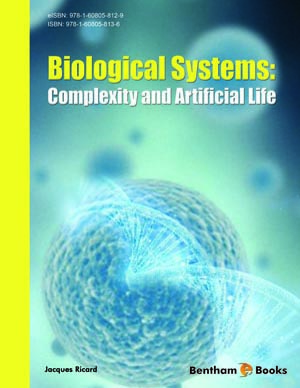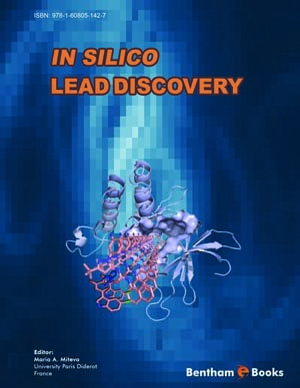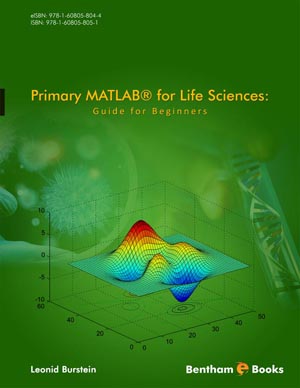The Vision of Classical Molecular Biology and its Limits
Page: 3-14 (12)
Author: Jacques Ricard
DOI: 10.2174/9781608058136114010002
PDF Price: $15
Abstract
Molecular approach has been, for decades, the classical way for studying biological problems. It implies that the essential biological properties can be reduced to the study of two classes of biomolecules, namely nucleic acids and proteins. The interest and the limits of the so-called molecular biology are discussed in this Chapter.
Biological Systems, Identity, Organization and Communication
Page: 15-34 (20)
Author: Jacques Ricard
DOI: 10.2174/9781608058136114010003
PDF Price: $15
Abstract
A living organism is a complex system that possesses an identity and emergent properties. Moreover such a system is able to communicate with its neighbours and cannot violate physical laws, for instance physical laws involved in communication of messages.
Emergence of Information in Biological Systems
Page: 35-58 (24)
Author: Jacques Ricard
DOI: 10.2174/9781608058136114010004
PDF Price: $15
Abstract
The concept of emergence is absent from classical molecular biology for it is implicitly, or explicitly, assumed that all the properties of living systems are in fine carried out by specific macromolecules. The concept of biological system implies that a number of biological properties are not borne by specific macromolecules but by a system of macromolecules. In this perspective a biological property originates from the connections between molecules belonging to a system. In classical molecular biology a property does not emerge for it is carried by a specific macromolecule. In systems biology properties emerge from the interactions that take place between the elements of a system.
Non-Equilibrium, Enzyme Reactions, Self-Organization and Dynamic Properties
Page: 59-67 (9)
Author: Jacques Ricard
DOI: 10.2174/9781608058136114010005
PDF Price: $15
Abstract
Even “simple” enzyme networks can possibly display emergence of properties. These properties can be generated by a drift of the system away from equilibrium conditions. The lack of equilibrium of an enzyme system certainly plays a major importance in defining its function within the living cell.
Enzyme Activity within the Living Cell
Page: 68-98 (31)
Author: Jacques Ricard
DOI: 10.2174/9781608058136114010006
PDF Price: $15
Abstract
Enzyme processes do not display any apparent “finality” when considered isolated, however they do within the cell. In fact the global behavior of the cell relies upon a co-ordination of many enzyme reactions. The aim of the so-called “metabolic control theory” is to show how many enzyme reactions are connected as to form a coherent network that possesses properties that are quantitatively and qualitatively different from those of individual enzyme reactions. The concept of “cascade” is discussed in this Chapter and their properties are shown to be different from those of the same enzymes considered in isolation. Many enzymes within the cell are associated with cell structures that behave as polyanions. Electrostatic repulsion of negatively charged substrates by the negative charges of plant cell wall generates an apparent negative co-operativity of enzyme reactions that take place in the cell wall. These effects can be modulated by external ionic strength. It follows that the behavior of enzymes in the cell have properties quite different from the same enzymes in free solution.
Thermodynamics of Energy Conversion within the Cell
Page: 99-125 (27)
Author: Jacques Ricard
DOI: 10.2174/9781608058136114010007
PDF Price: $15
Abstract
Many enzyme reactions take place in the living cell. Most of them are disfavored by thermodynamics i.e. most of them could not take place alone, in isolation. In the same vein, most of the processes involving the transport of matter are thermodynamically disfavored. It is only because these chemical and transport processes are coupled as to form a system that this system is feasible and functioning.
Driving Unfavorable Molecular Motions within the Cell
Page: 126-141 (16)
Author: Jacques Ricard
DOI: 10.2174/9781608058136114010008
PDF Price: $15
Abstract
Molecular motions take place within the cell. Considered in isolation these motions would have been impossible. It is only because they are coupled with chemical reactions within the cell that they can take place.
Physics of Metabolic Oscillations
Page: 142-169 (28)
Author: Jacques Ricard
DOI: 10.2174/9781608058136114010009
PDF Price: $15
Abstract
Individual enzyme reactions in isolation cannot display any periodic behavior, however they display this behavior when they are associated with other reactions. It is the system thus formed that displays such periodic behavior.
Biochemical Networks
Page: 170-183 (14)
Author: Jacques Ricard
DOI: 10.2174/9781608058136114010010
PDF Price: $15
Abstract
Any set of connected enzyme reactions constitute a network. Contrary to most networks studied so far (for instance networks of social connections) metabolic networks are open structures with an input and an output of matter. As such they possess some properties that are unique when compared to closed networks.
Non-Equilibrium Dynamics, Biological Systems and Time-Arrow
Page: 184-195 (12)
Author: Jacques Ricard
DOI: 10.2174/9781608058136114010011
PDF Price: $15
Abstract
The concept of time-arrow does not appear frequently in physics. This is not the case for the study of biochemical systems as many of them are able to sense whether a variable is increasing or decreasing. This effect can be explained by the non-linear character of the system and its dynamics.
Some Philosophical Implications of the Concept of Biological System
Page: 196-201 (6)
Author: Jacques Ricard
DOI: 10.2174/9781608058136114010012
PDF Price: $15
Abstract
The present Chapter relates and summarizes the main features of biological systems. Contrary to molecular biology, systems biology does not attempt at explaining biological events in terms of the properties of biomolecules but in terms of systems of biomolecules. As these systems are abstract entities it follows that systems biology has an abstract character that can only be approached by the use of mathematics. Exactly as for physics, this situation raises the question of the concrete reality of the theoretical concepts.
Introduction
The exponential increase in computing power in the late twentieth century has allowed researchers to gather, process and analyze large volumes of information and construct rational paradigms of systems. Life sciences are no exception and computing advances have led to the birth of fields such as functional genomics and bioinformatics and facilitated an expansion of our understanding of biological systems. Biological Systems: Complexity and Artificial Life is an essential primer on systems biology for biologists and researchers having a multidisciplinary background. The volume covers a variety of theoretical models explaining biological processes. The book starts with an introductory chapter on the classical molecular biology paradigm and progresses towards concepts related to enzyme kinetics, non equilibrium dynamics, cellular thermodynamics, molecular motion in cells and more. The book concludes with a philosophical note on the concept of the biological system.













